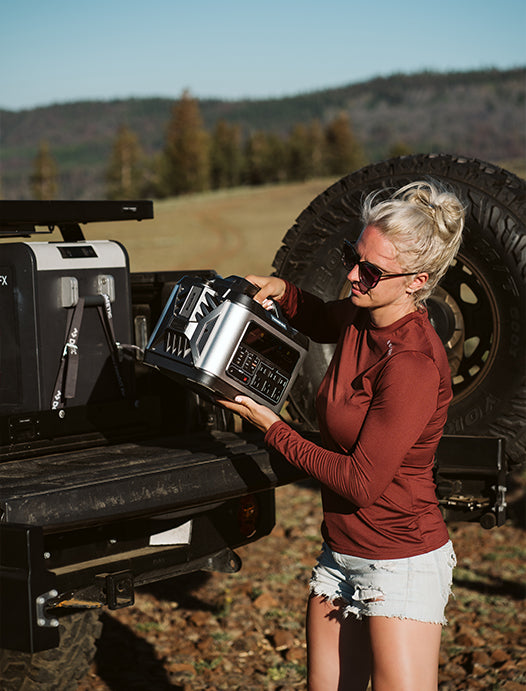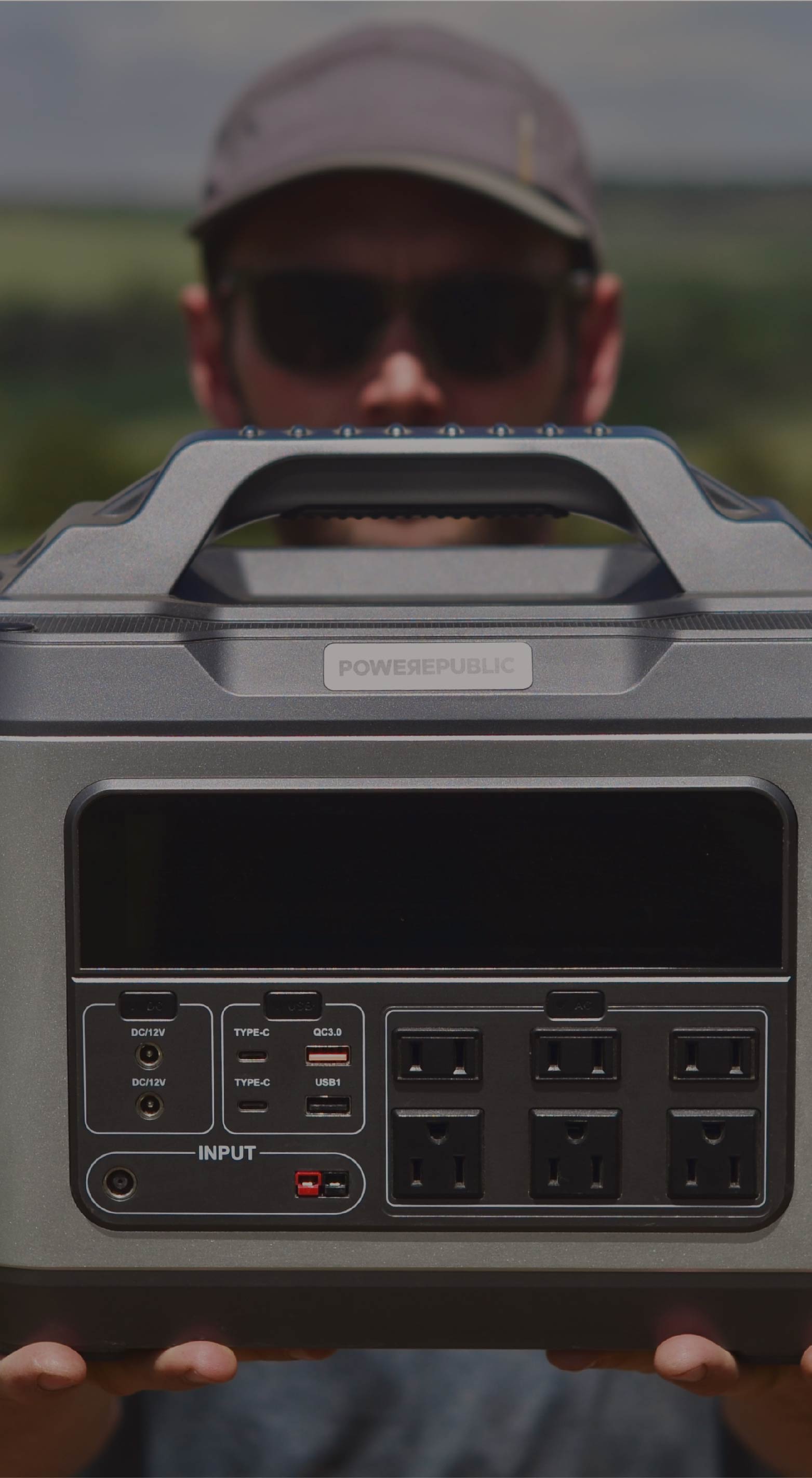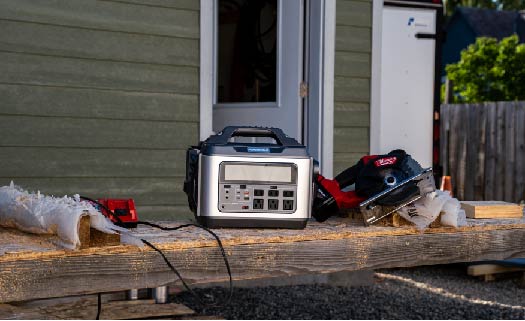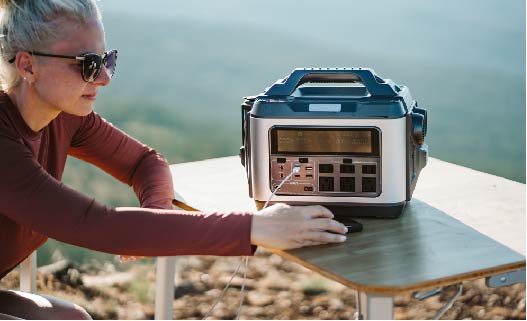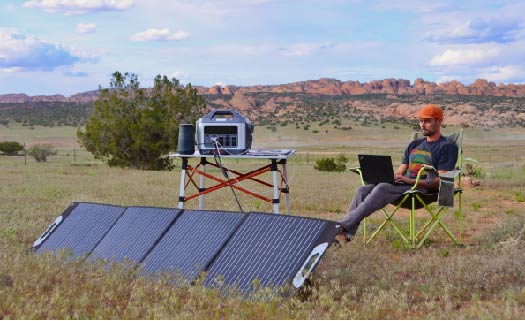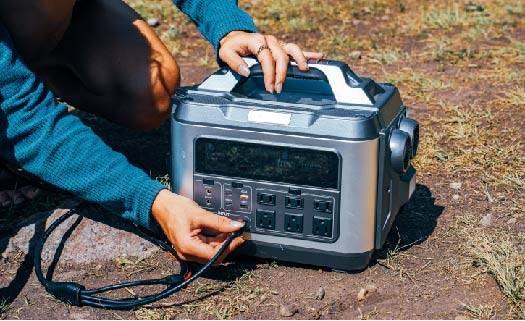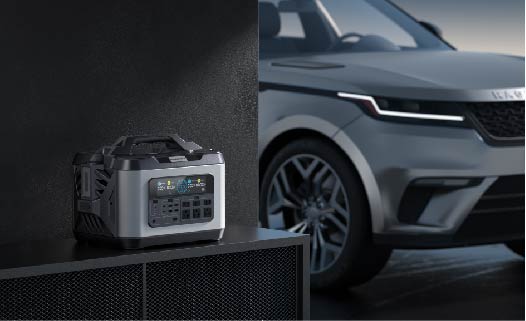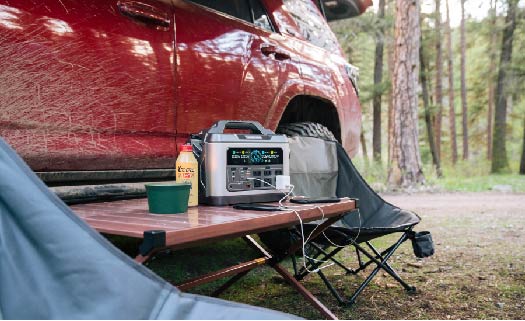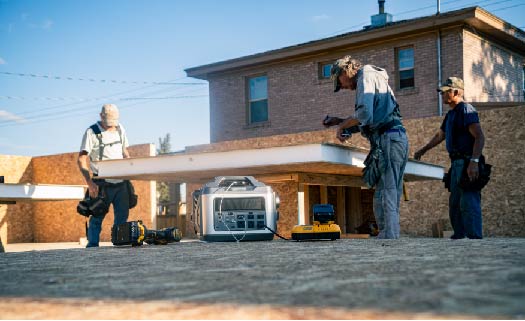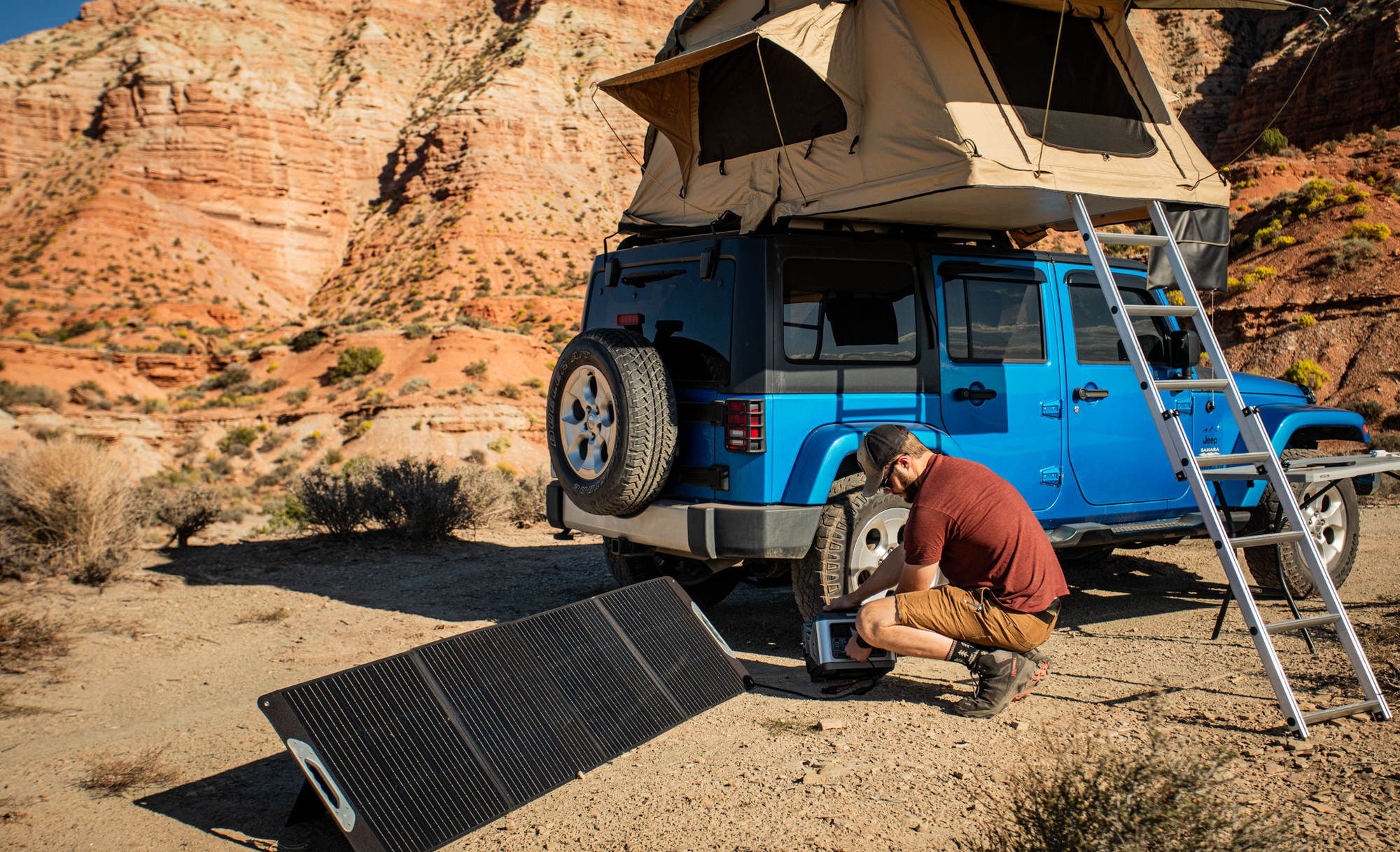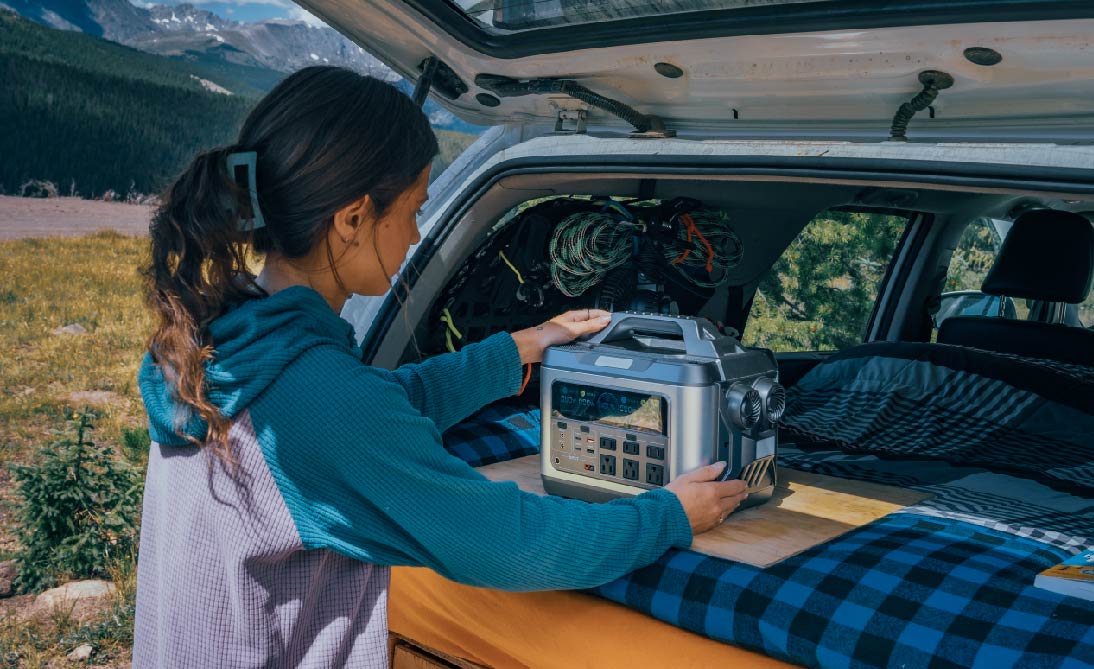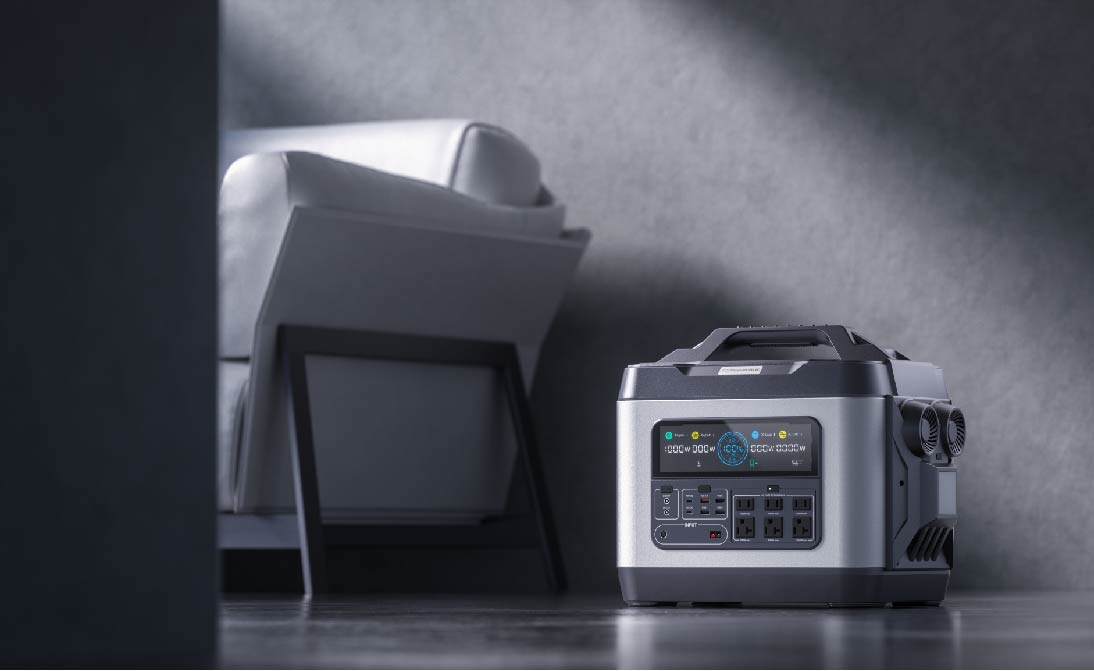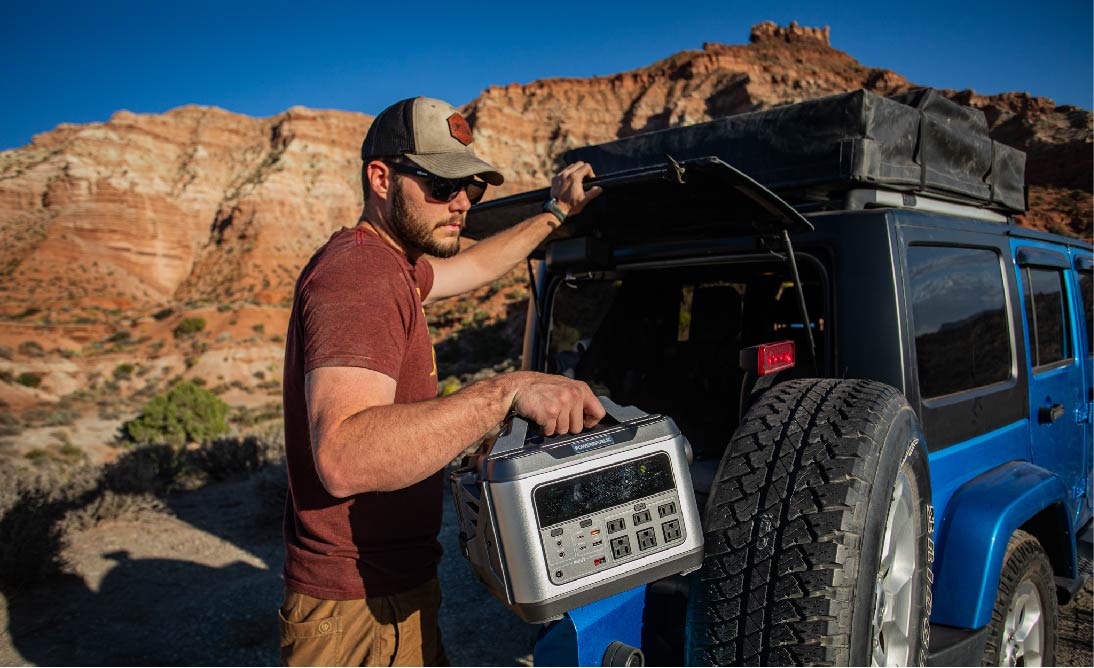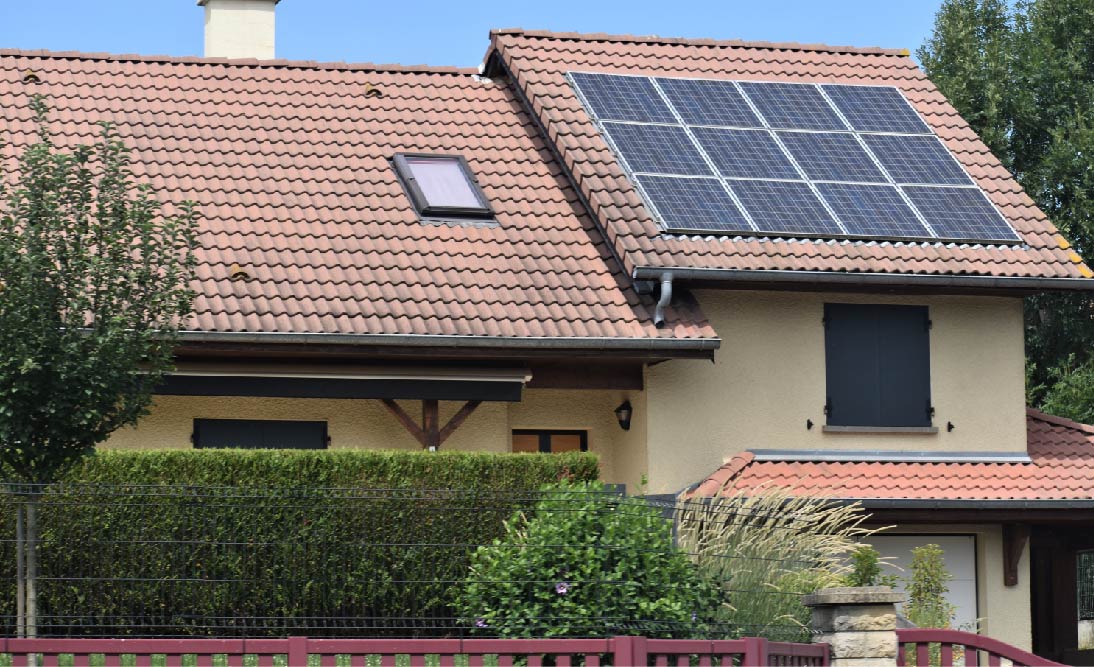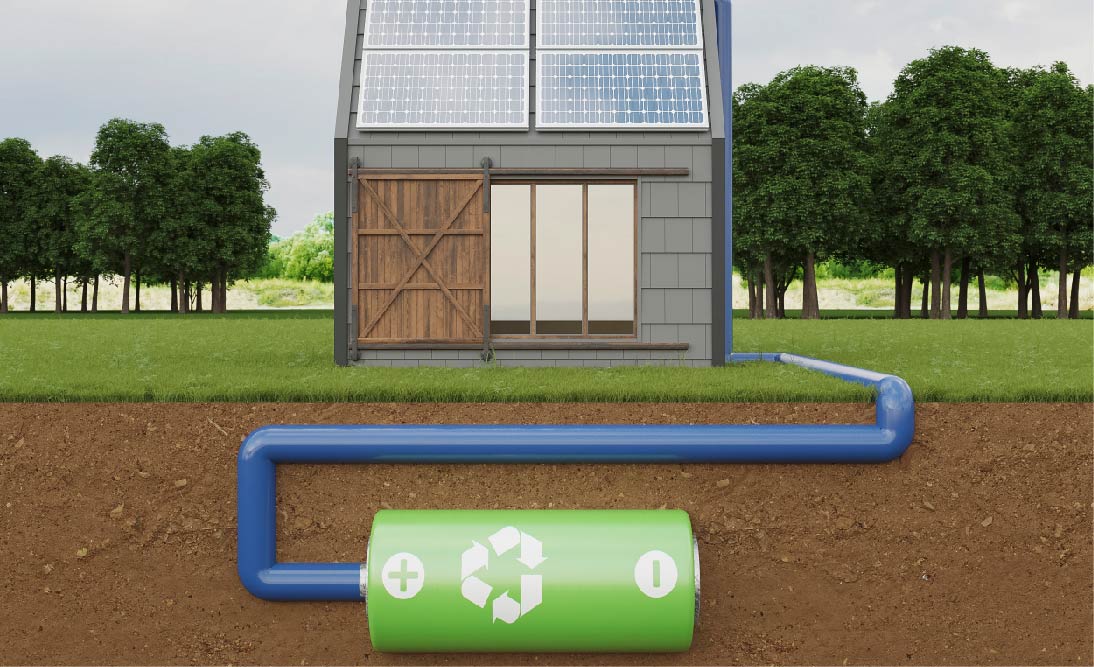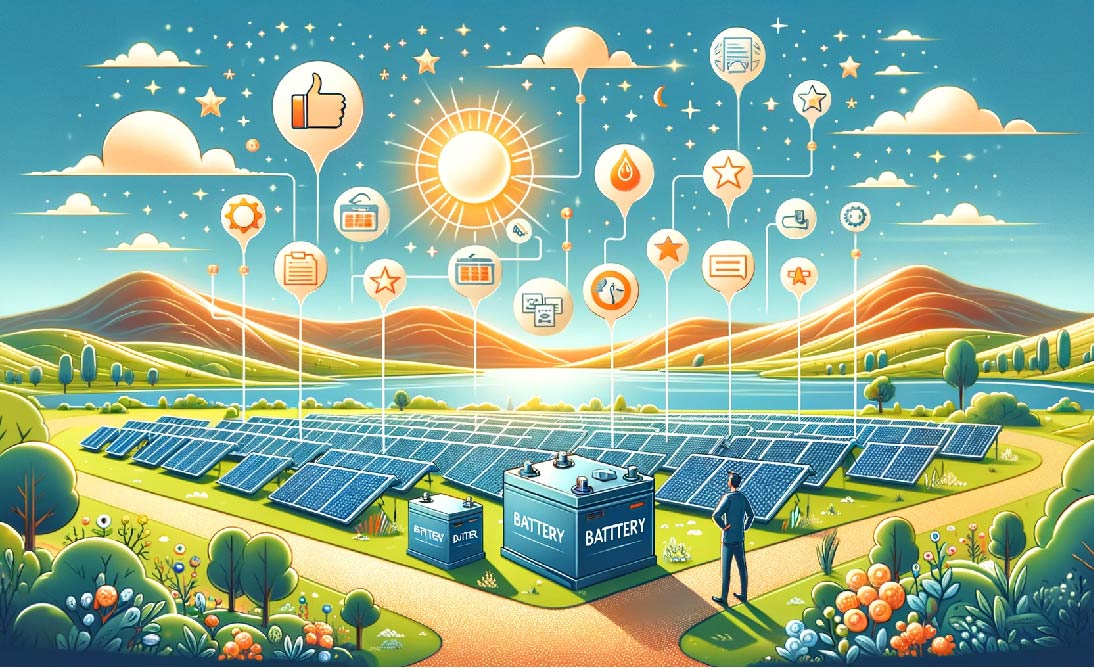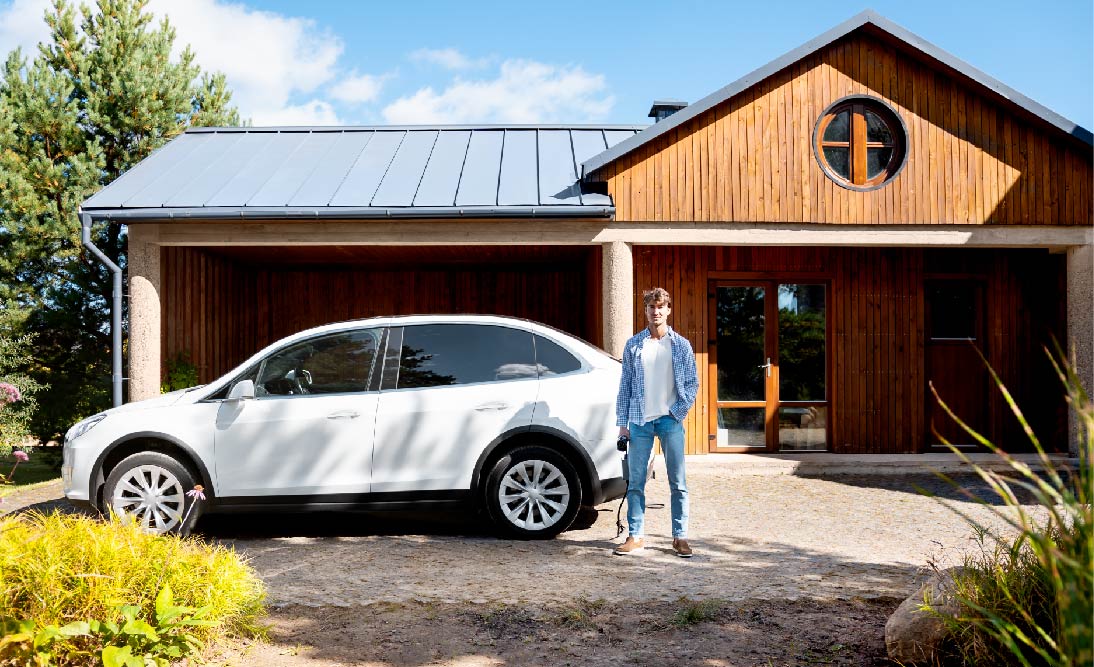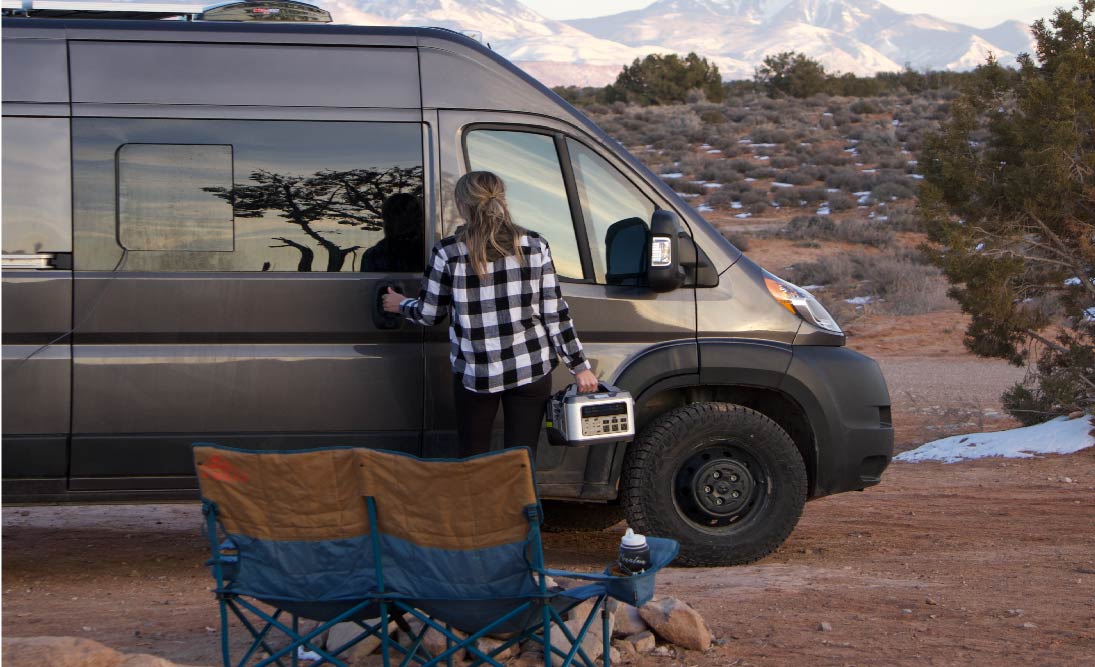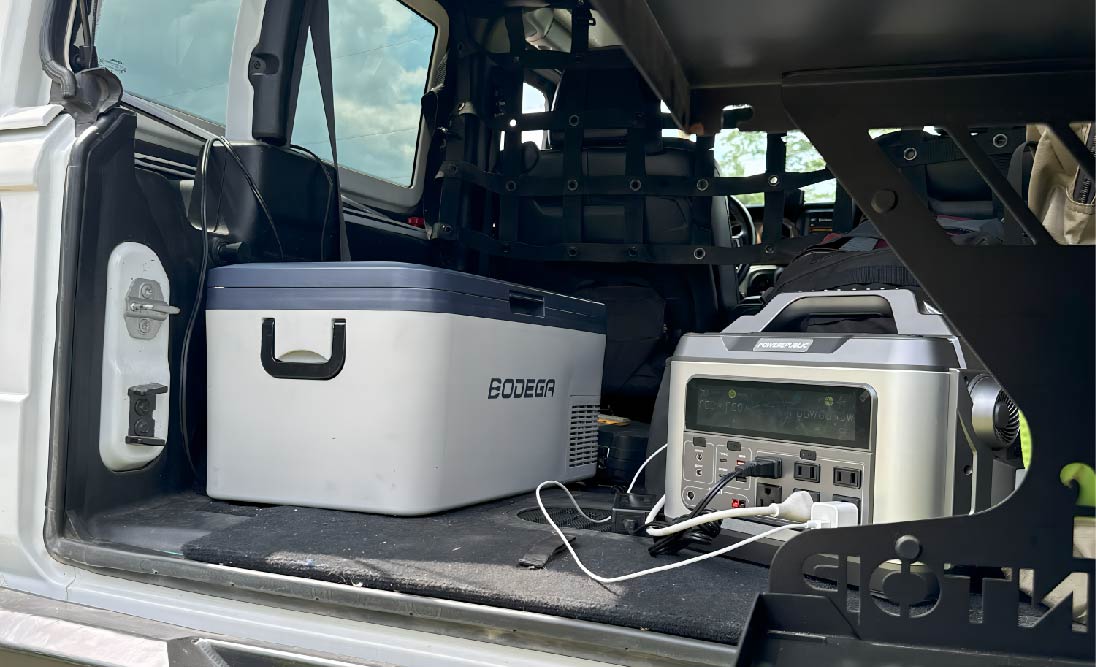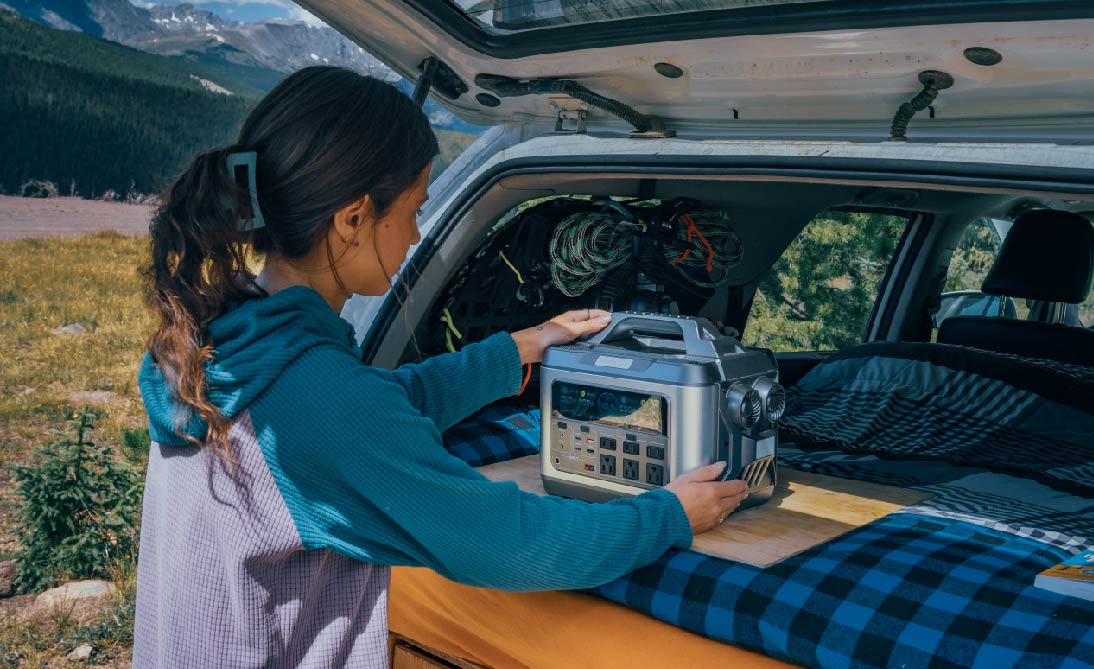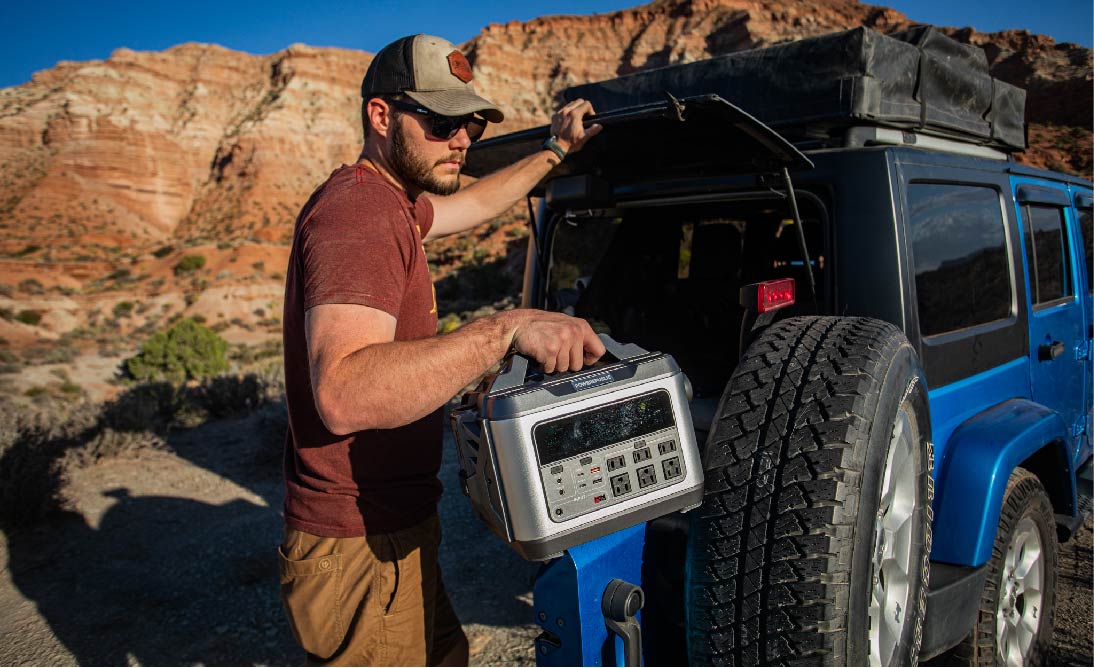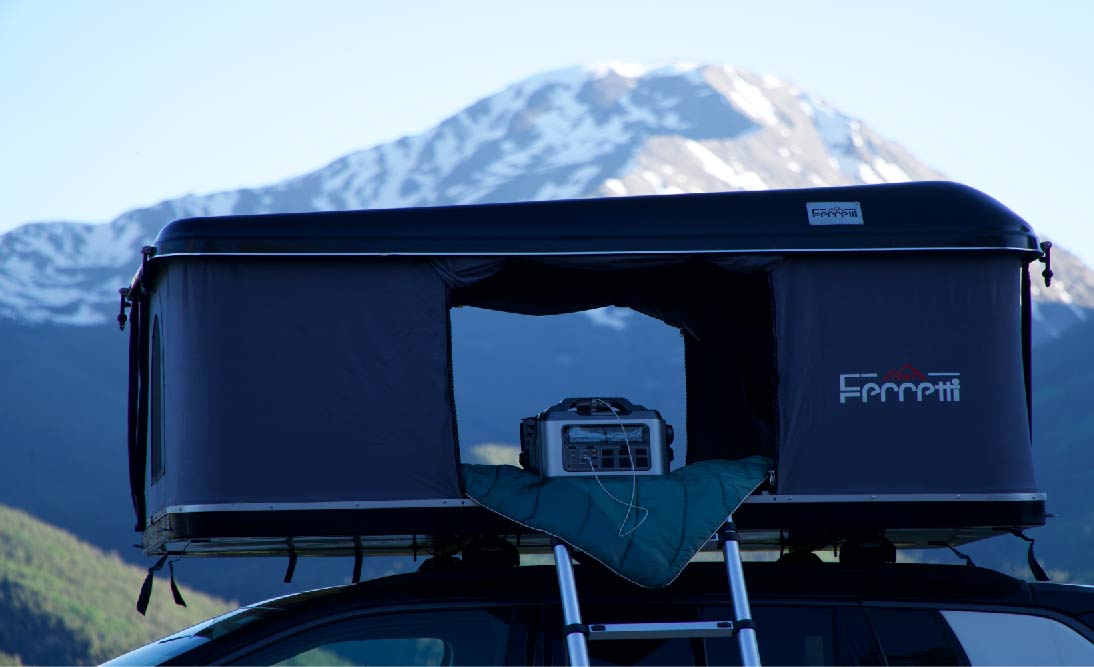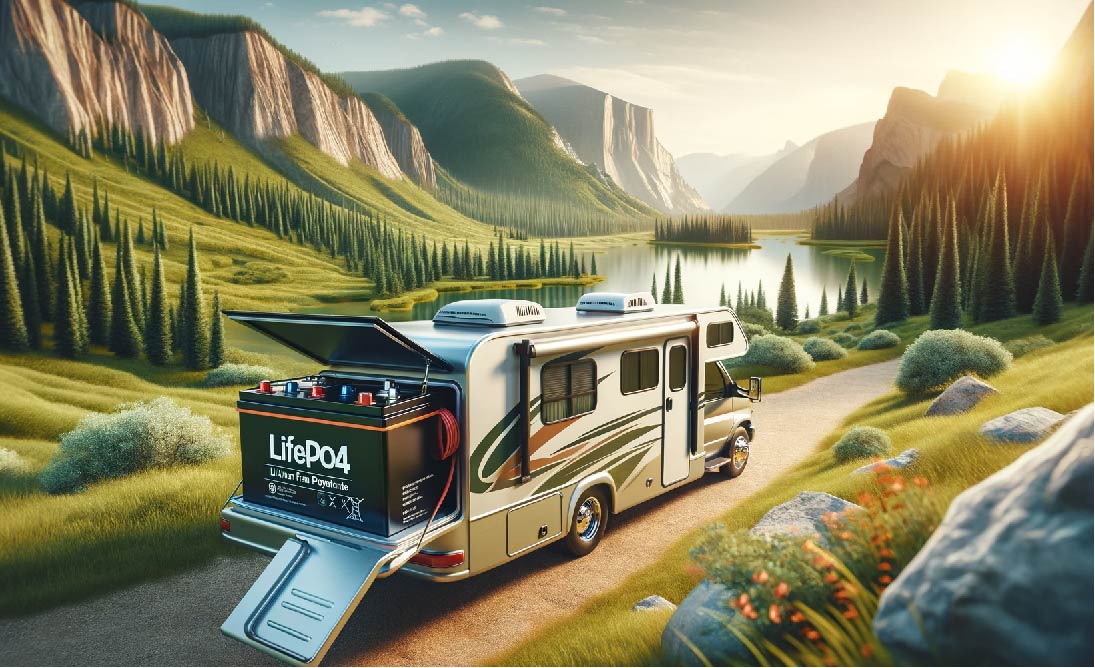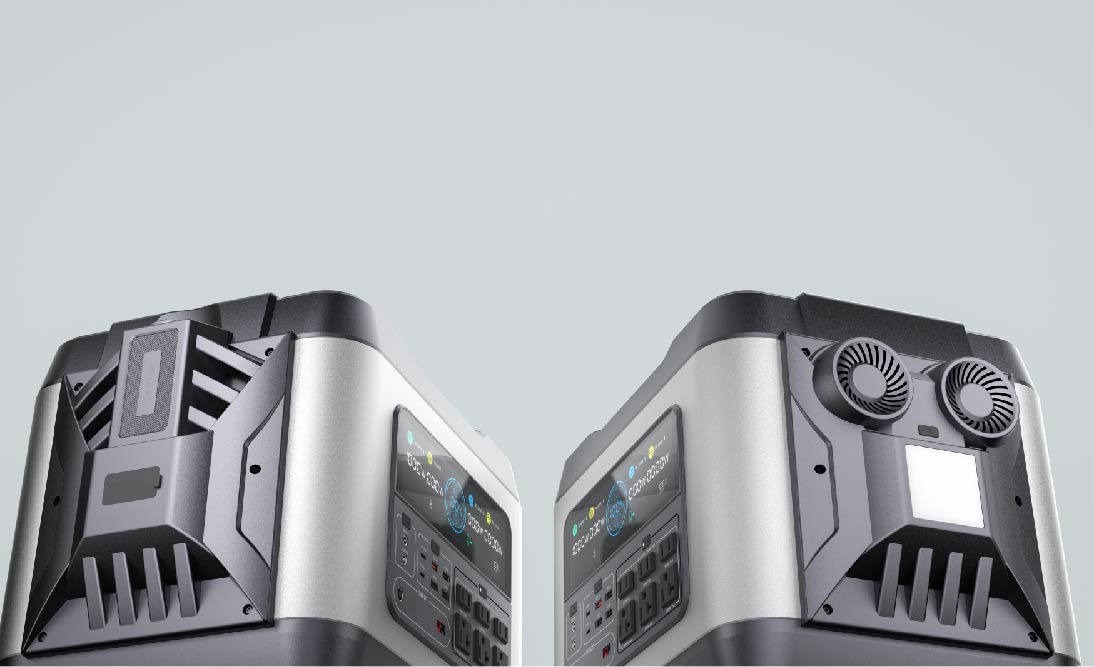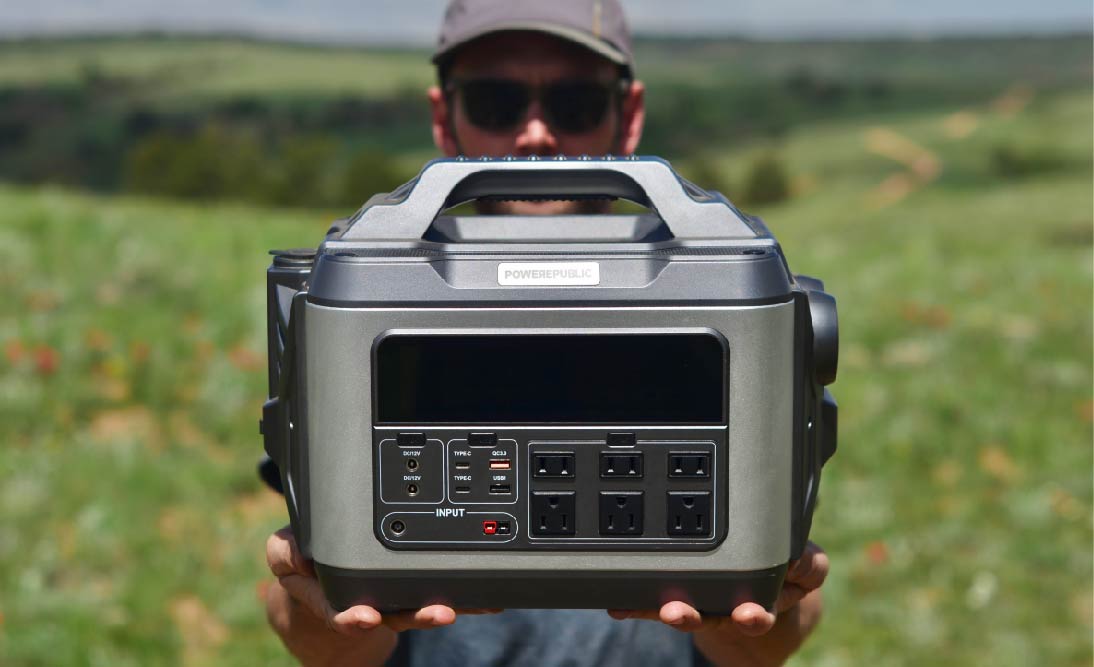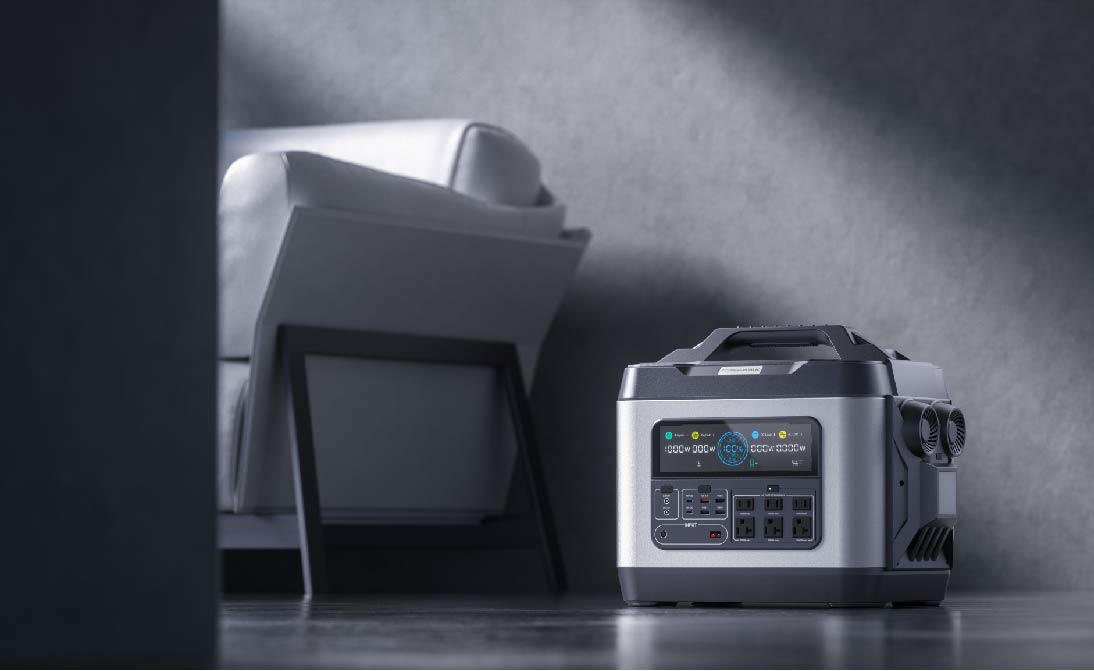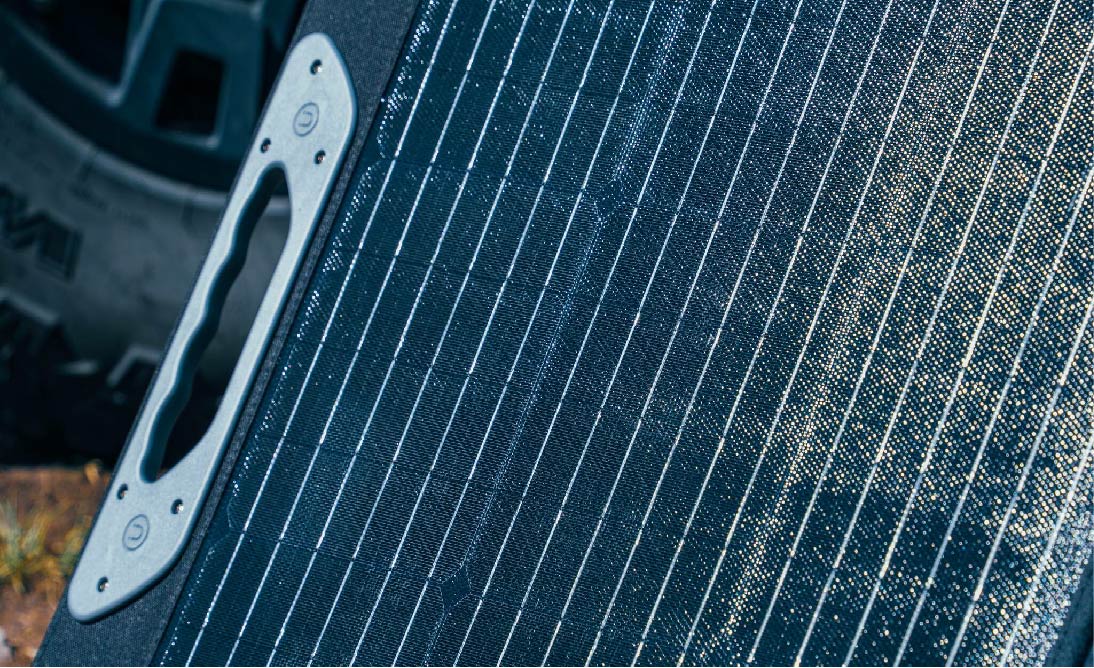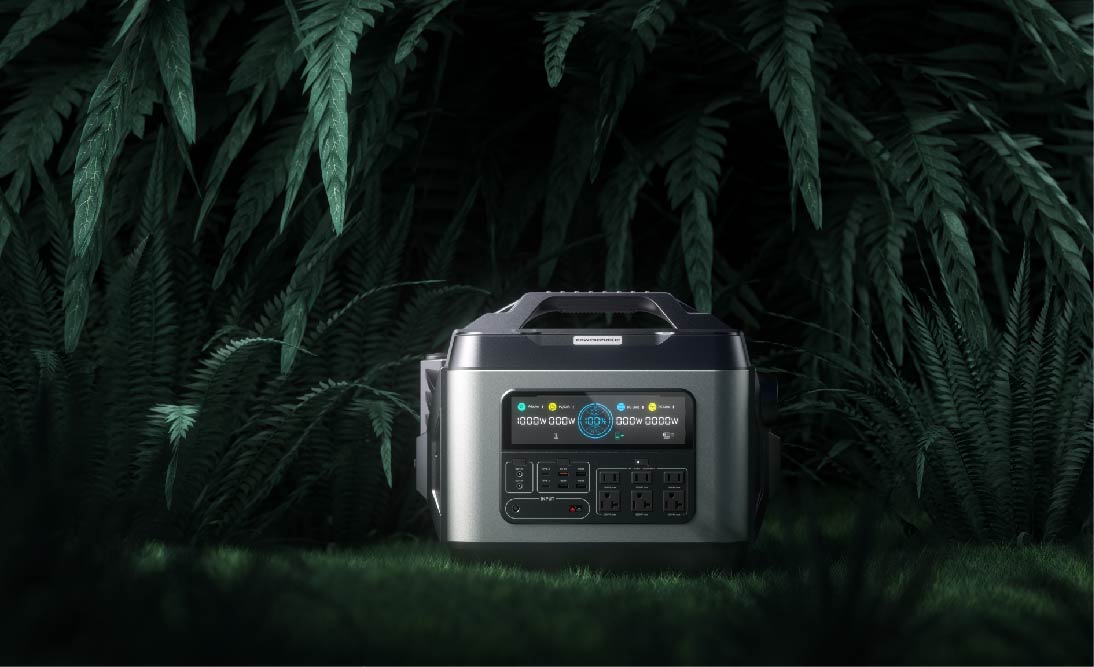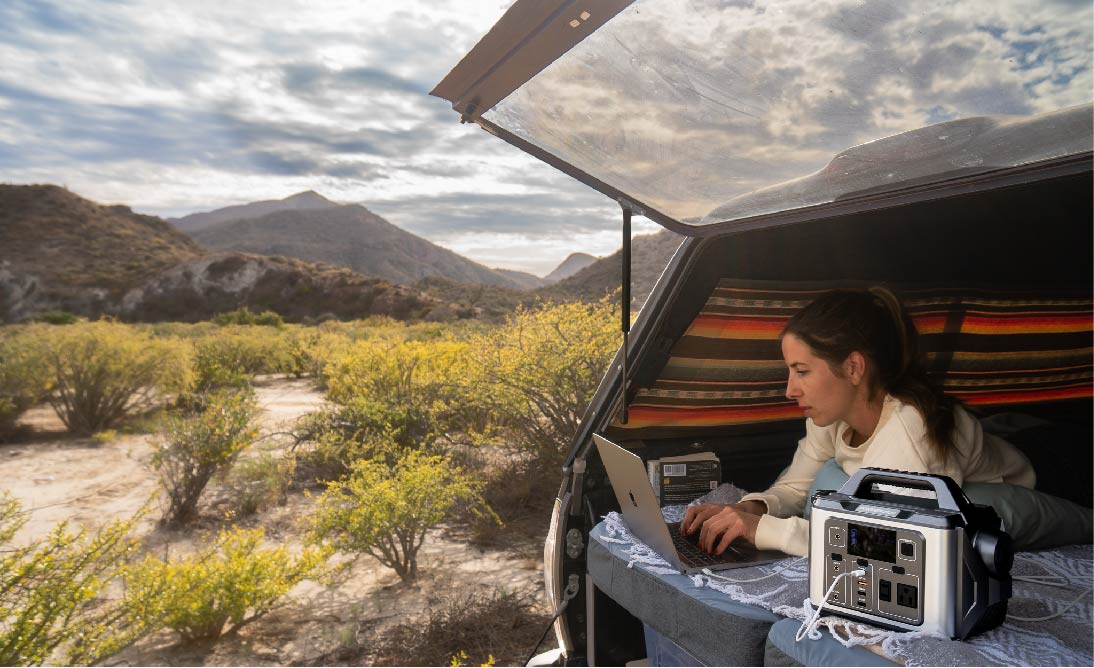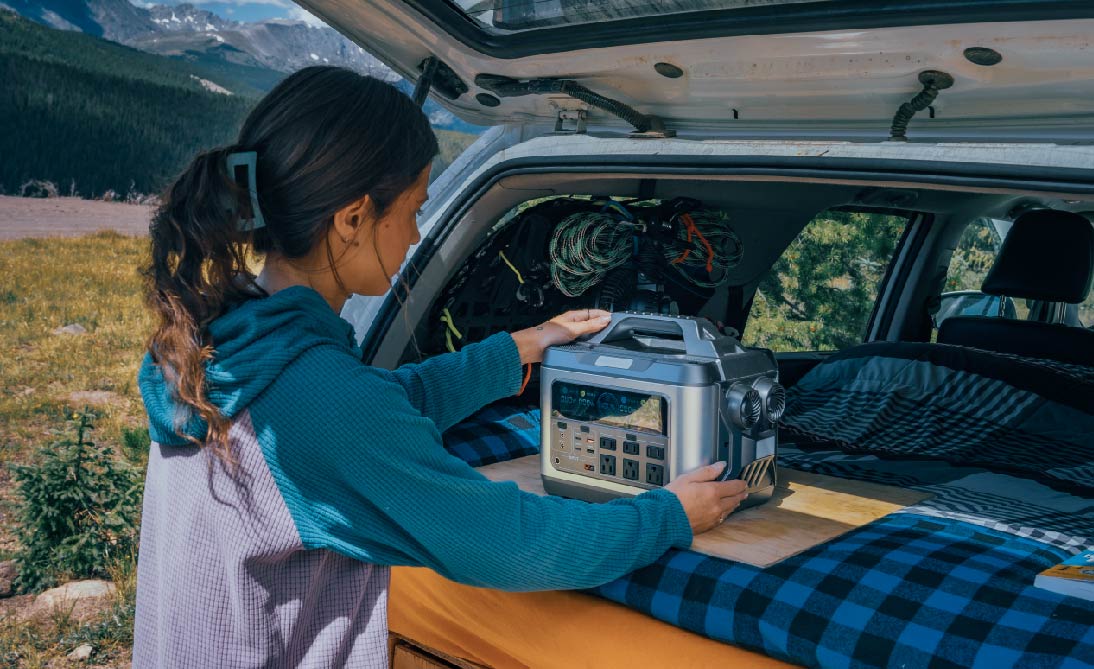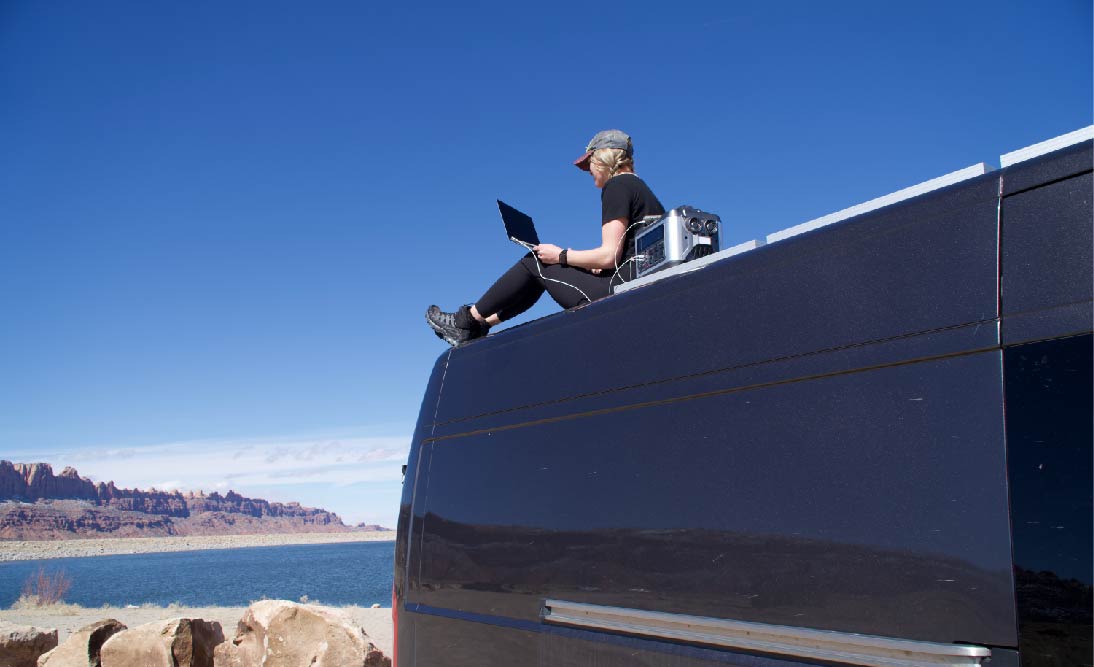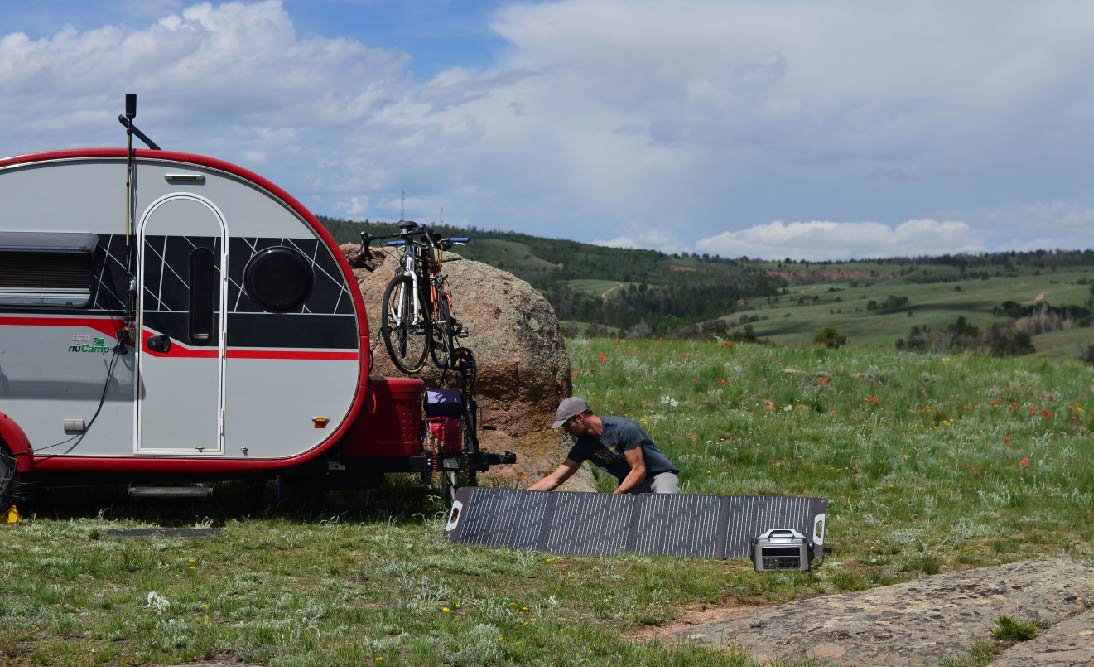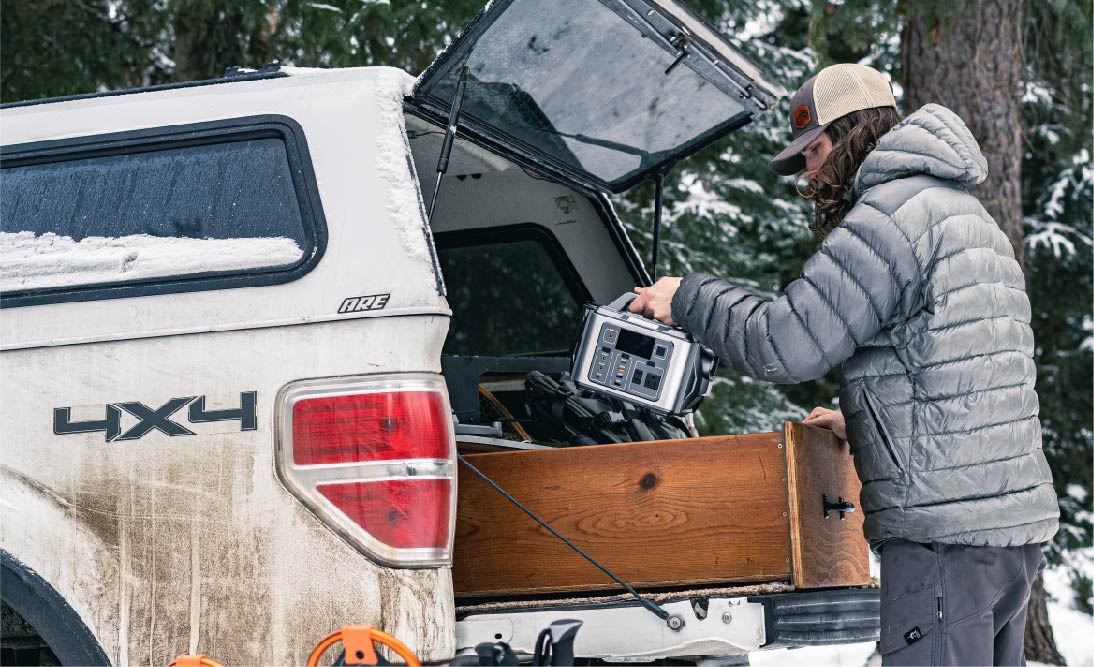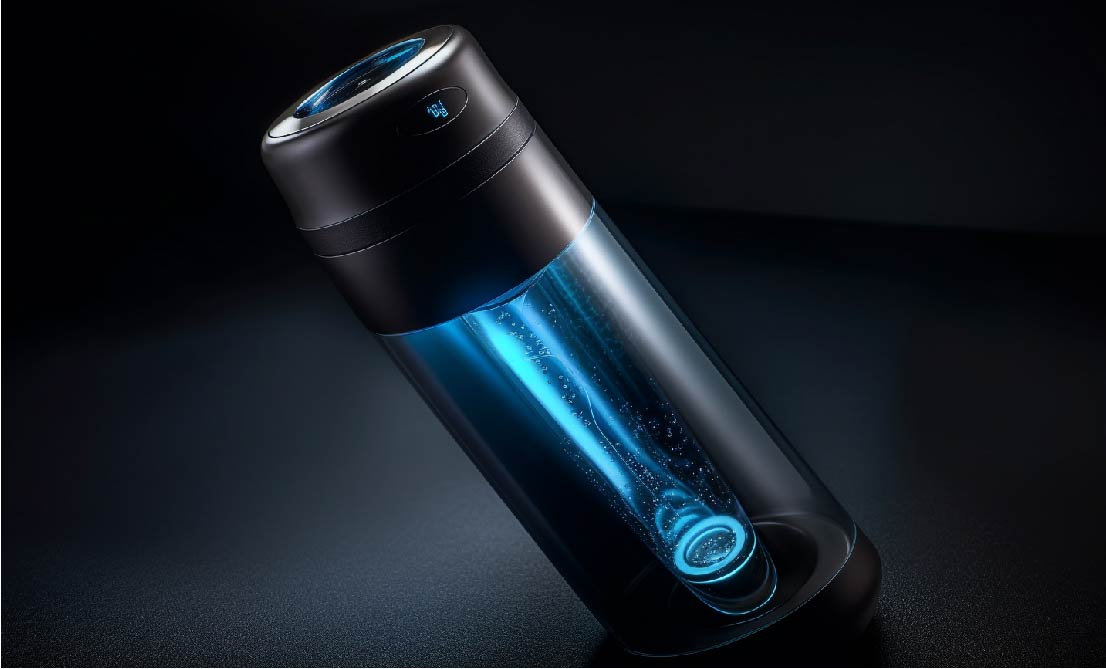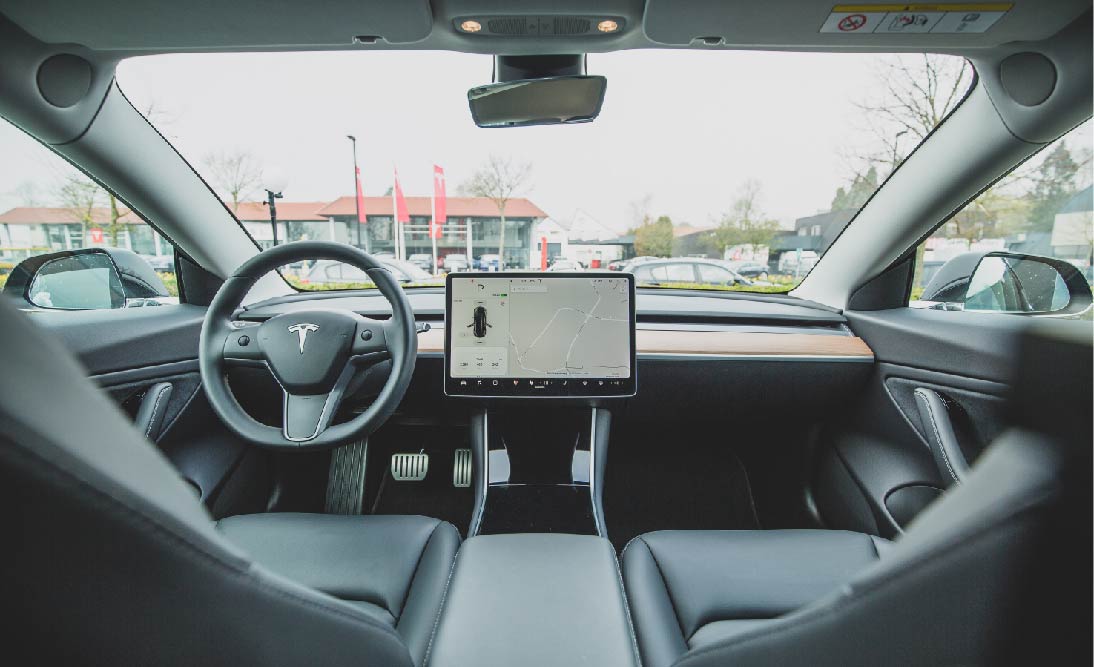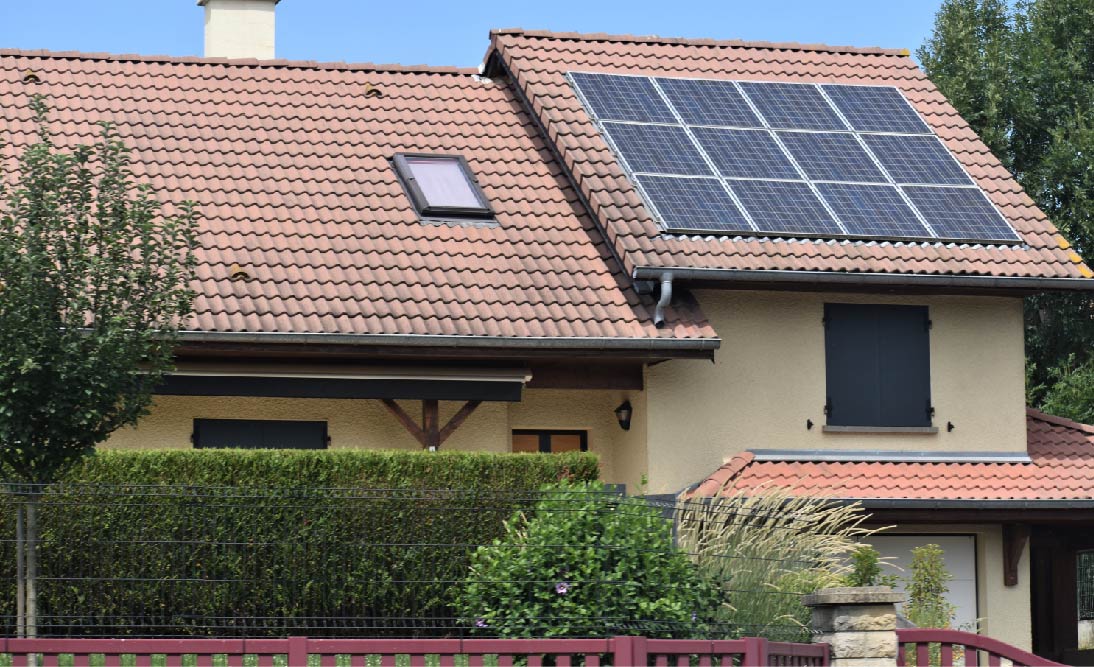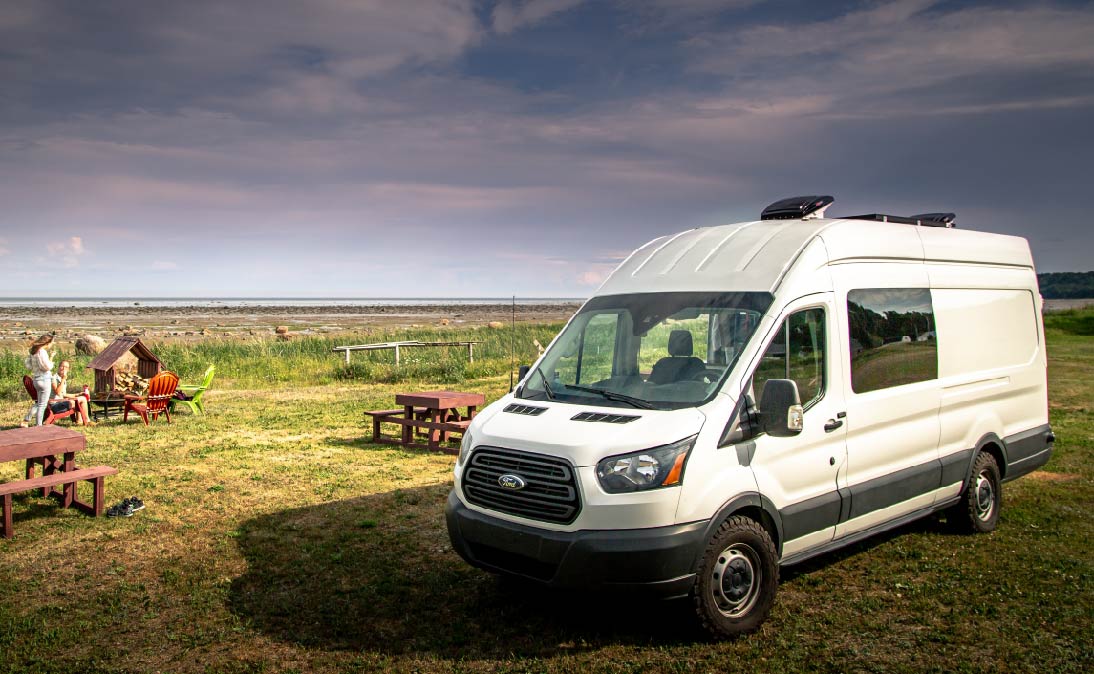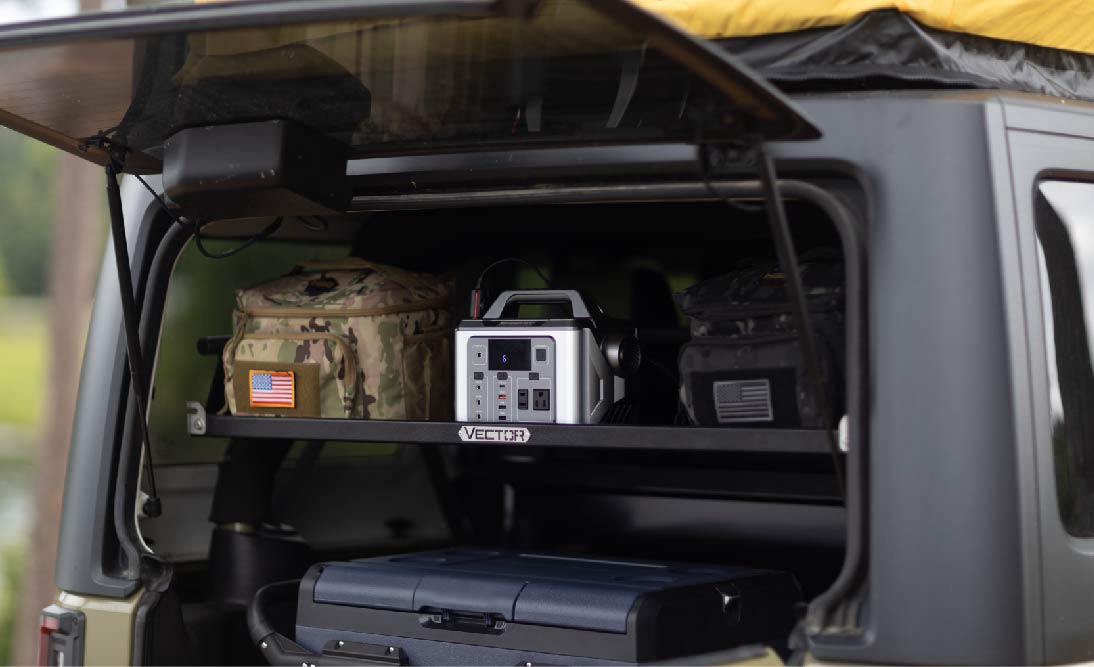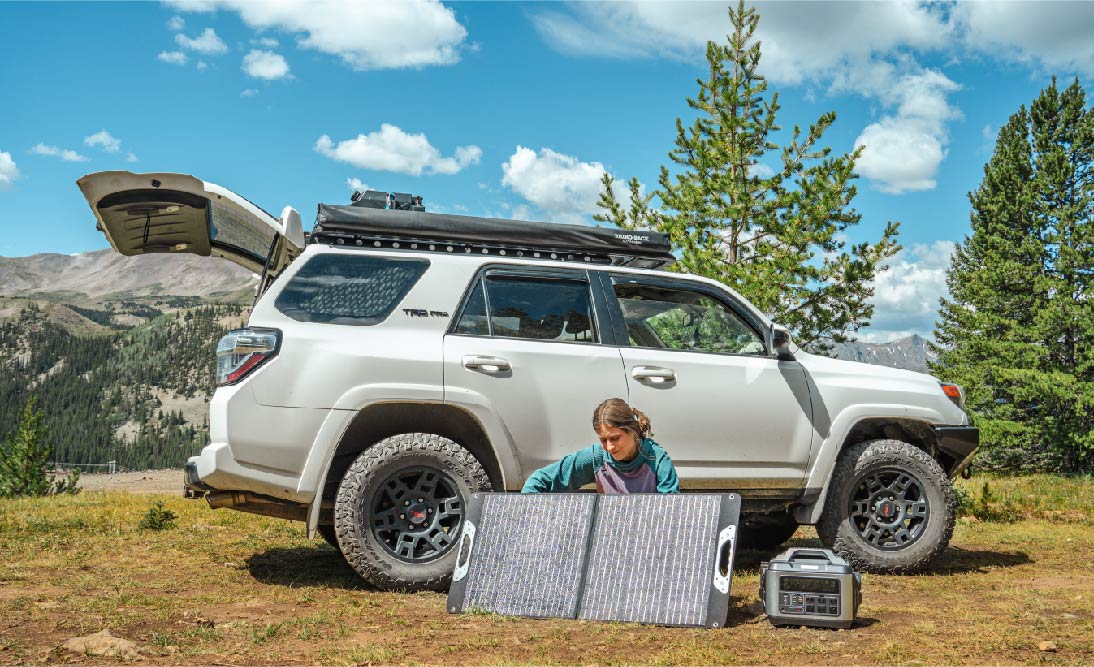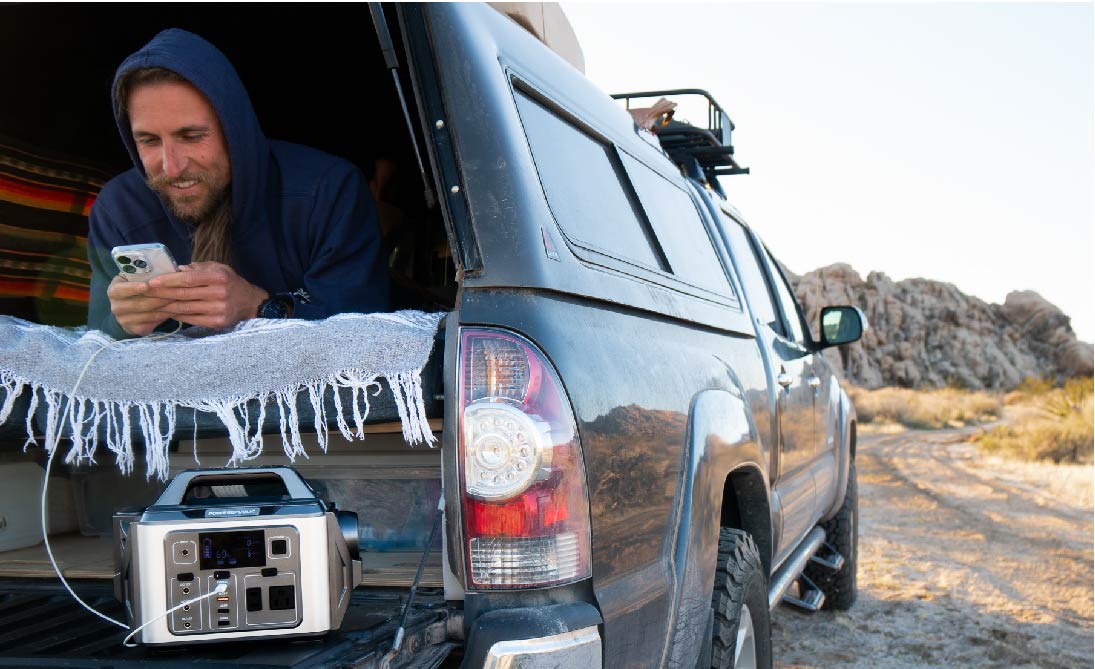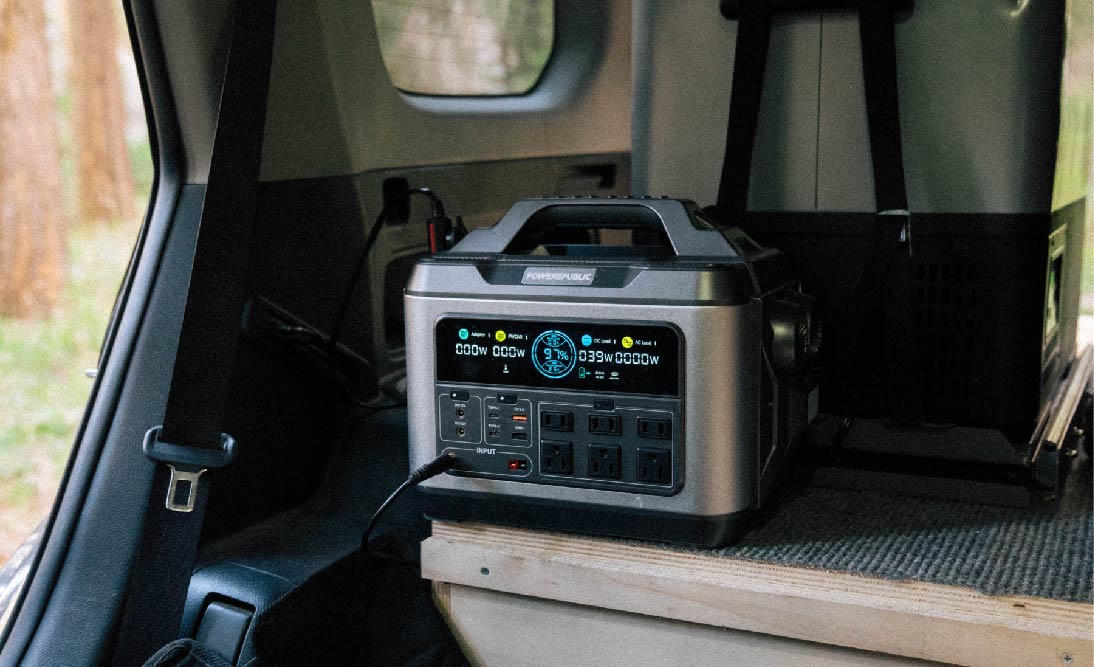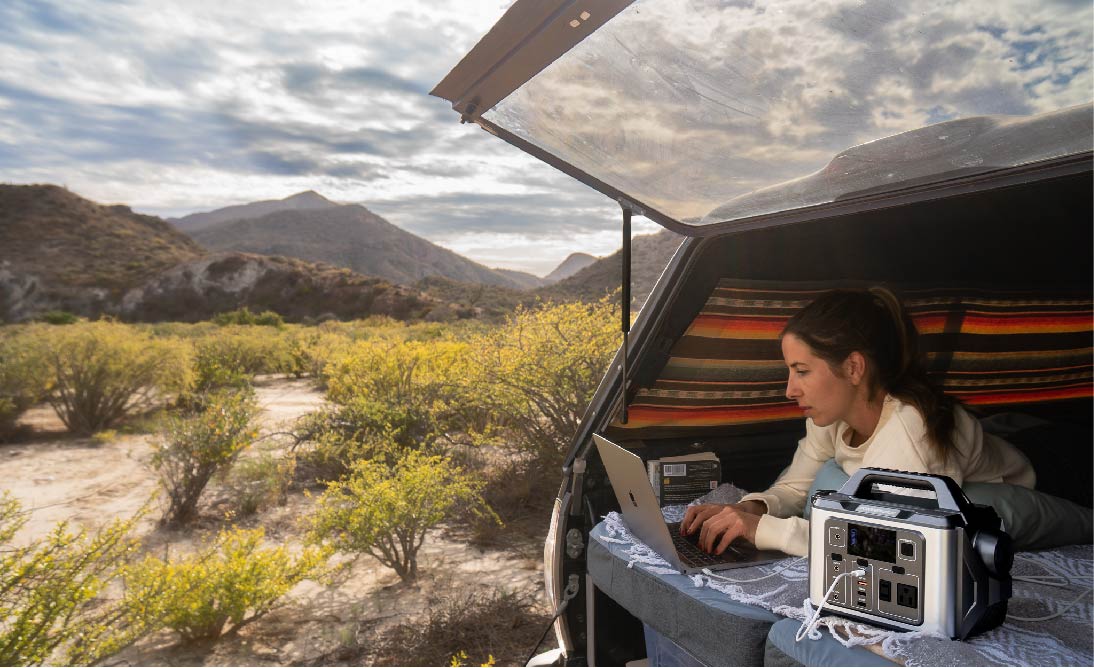Table of Contents:
-
What Specs Should You Look For When Choosing a Camping Power Bank?
-
Which One is Better: a Camping Power Bank or a Portable Power Station?
Having enough power to keep your essential devices charged at the campsite can greatly enhance your outdoor experience. That's why bringing a camping power bank on the road is important. Camping power banks vary in size and capacity, making them one of the must-have companions for campers. Items with smaller sizes and lower capacities are called power banks or camping power banks, whereas items with larger sizes and higher capacities are referred to as portable power stations or portable power banks. Both are reliable power solutions for campers, but they do have some differences.
In this guide, we are going to discuss every aspect of camping power banks, learn the similarities and differences between a camping power bank and a portable power station, introduce POWEREPUBLIC portable power stations for different camping needs, and answer some frequently asked questions from campers and outdoor enthusiasts.
Let’s begin!
Camping Power Bank Overview
What is a Camping Power Bank?
A camping power bank is a portable device designed to store electrical energy and later use it to charge a variety of electronic devices such as smartphones, tablets, cameras, and even some small appliances.

These power banks are particularly useful for camping trips where access to electrical outlets is limited or non-existent. They come in various sizes and capacities to suit different needs, ranging from smaller, pocket-sized banks for minimal charging needs to larger, high-capacity banks capable of charging multiple devices multiple times.
How Does a Power Bank Work?
A power bank works by storing electricity in lithium-ion or LiFePO4 batteries, similar to the batteries found in most modern electronic devices. When you charge your power bank, you're essentially filling it with electricity which is then stored in these batteries. Later, when your devices need charging, you connect them to the power bank via a USB cable or other compatible connectors, and the stored electricity flows from the power bank to your device, charging its battery.
The process involves several key components:
-
Battery Cells: The heart of the power bank, where energy is stored. The capacity of these cells determines how much charge the power bank can hold.
-
Input Port: This is where the power bank receives electricity from an external source (like a wall socket) for charging up its internal batteries.
-
Control Circuitry: This includes various electronic components that regulate charging and discharging, ensuring safety and efficiency. It prevents overcharging, controls the rate of charge, and manages power distribution when multiple devices are connected.
-
Output Ports: These are the ports where you plug in your devices to charge them. Modern power banks may have multiple output ports of different types (like USB-A, USB-C, etc.) to accommodate various devices.
-
Indicator Lights or Display: Most power banks include some form of indicator to show how much charge is left in the power bank, typically through LED lights or a small digital display.
Overall, camping power banks are a convenient and efficient way to ensure that your devices remain charged during your outdoor adventures, keeping you connected and safe even in remote locations.
Why Do Campers Need a Camping Power Bank?
In essence, a camping power bank is a versatile and essential tool for modern campers, blending safety, convenience, and comfort, making it a must-have in any camper's gear list.

Campers need a camping power bank for several key reasons that enhance their outdoor experience and ensure safety:
-
Device Charging in Remote Locations: The primary reason for carrying a camping power bank is to charge electronic devices like smartphones, GPS units, cameras, and tablets in places where access to electrical outlets is not available. This is particularly crucial in remote camping sites.
-
Emergency Preparedness: In emergencies, having a charged phone or GPS device can be a lifesaver. A power bank ensures that you have enough battery power to call for help, use navigation tools, or access important information online.
-
Convenience and Comfort: Many modern camping tools and gadgets, such as electric lanterns, portable fans, or even camping stoves, rely on electrical power. A power bank allows you to use these comforts of home while in the wilderness, enhancing your camping experience.
-
Photography and Entertainment: For those who enjoy capturing their outdoor experiences through photos or videos, a power bank ensures that cameras and smartphones are always ready for the next shot. It also allows for entertainment like listening to music or watching movies in the tent.
-
Navigation and Communication: Devices like smartphones and GPS units are not only for convenience but are also essential for navigation and staying in contact with fellow campers or emergency services. A power bank guarantees these devices remain operational.
-
Extended Trips: On longer camping trips, the chances of running out of device battery are higher. Power banks provide a reliable source of power for several days, depending on their capacity.
-
Environmental Friendliness: Instead of using disposable batteries, which can be harmful to the environment, rechargeable power banks offer a more eco-friendly solution to power needs in the outdoors.
-
Sharing Power: Larger capacity power banks can charge multiple devices at once, making them suitable for group camping, where several campers can benefit from a single power source.
Weakness of a Camping Power Bank
While camping power banks are incredibly useful for outdoor adventures, they do have certain limitations and weaknesses.

Understanding these weaknesses is crucial for campers to make informed decisions and prepare adequately for their power needs during camping trips.
-
Limited Capacity: Even high-capacity power banks have a finite amount of stored energy. Once depleted, they can't charge devices until recharged, which can be a challenge in remote areas without access to power sources.
-
Recharging Time: Power banks, especially those with larger capacities, can take a long time to recharge fully. This can be inconvenient if you have a limited time near a power source or if you're continuously on the move.
-
Weight and Size: Higher-capacity power banks are often heavier and bulkier, which can add significant weight to your backpack. This can be a concern for backpackers or hikers who need to minimize their load.
-
Weather Sensitivity: Most power banks are sensitive to extreme weather conditions. Excessive heat or cold can affect their performance and lifespan. This makes them less reliable in extreme outdoor environments unless they are specifically designed to handle such conditions.
-
Cost: High-quality, high-capacity power banks can be quite expensive. The initial investment might be significant, especially for casual campers who may not use them frequently.
-
Maintenance and Lifespan: Lithium-ion batteries, which are commonly used in power banks, have a limited lifespan and may start losing their capacity after a few years. Proper maintenance is required to prolong their life.
-
Dependence on Electricity: For a power bank to be useful, it requires prior access to an electrical source for charging. In prolonged outdoor scenarios without access to electricity, this can be a limitation.
-
Environmental Impact: While more eco-friendly than disposable batteries, the production and disposal of power banks still have an environmental impact due to the materials and processes used in their manufacture.
-
Complexity and Technical Issues: More advanced power banks come with additional features like solar panels, multiple ports, and fast charging, which can also mean more potential points of failure and technical issues.
-
Safety Concerns: Poorly made or damaged power banks can pose safety risks, such as overheating, which can be particularly concerning in a camping environment.
What Specs Should You Look For When Choosing a Camping Power Bank?
When selecting a camping power bank, several key specifications should be considered to ensure it meets your camping needs effectively.

Here's a guide to help you make an informed choice:
Know Your Camping Power Needs:
-
Device Requirements: List the devices you'll need to charge (smartphones, cameras, GPS, etc.) and their battery capacities.
-
Usage Frequency: Consider how often you use these devices and how quickly they deplete their batteries.
Battery Capacity:
-
Measured in mAh (milliampere-hours): The capacity of a power bank indicates how much charge it can hold. For example, a 10,000 mAh power bank can theoretically charge a 2,500 mAh smartphone battery about four times.
-
Calculation Example: If your phone has a 3,000 mAh battery and you plan to charge it once per day over a 3-day camping trip, a power bank with at least 9,000 mAh would be necessary.
Portability:
-
Size and Weight: Larger-capacity power banks are heavier and bulkier. Balance your capacity needs with the convenience of carrying the power bank.
-
Design: Look for a design that is rugged and suitable for outdoor use.
Output Ports:
-
Number of Ports: If you plan to charge multiple devices simultaneously, choose a power bank with more than one output port.
-
Port Types: Ensure the power bank has the right types of ports (USB-A, USB-C, etc.) for your devices.
Input Charging Options:
-
Charging the Power Bank: Consider how you will recharge the power bank. Some models offer solar charging, which is ideal for camping.
-
Recharging Time: Check how long it takes to recharge the power bank itself.
Durability and Weather Resistance:
-
Build Quality: Look for durable materials that can withstand outdoor conditions.
-
Weatherproofing: Some power banks are designed to be water-resistant or weatherproof, which is an advantage for camping.
Budget:
-
Cost vs. Features: Higher capacity and additional features typically increase the price. Determine what features you need and set a budget accordingly.
Additional Features:
-
Solar Panels: For extended camping trips without access to electricity, a power bank with solar panels can be beneficial.
-
Built-in Flashlights or Emergency Features: Some power banks come with added features like LED flashlights, which can be useful in camping scenarios.
Brand and Warranty:
-
Reputable Brands: Choose brands with good reviews and customer feedback.
-
Warranty and Support: Check the warranty period and what it covers. Good customer support is also important for after-sales service.
Safety Features:
-
Protection Circuits: Ensure the power bank has built-in protection against overcharging, short-circuiting, and overheating.
Example:
-
Suppose you have a smartphone with a 3,000 mAh battery, a camera with a 1,200 mAh battery, and you use a GPS device with a 2,500 mAh battery. On a 3-day trip, you anticipate charging each device once per day. The total capacity needed would be: (3,000 mAh + 1,200 mAh + 2,500 mAh) * 3 days = 20,100 mAh.
-
In this case, a power bank with at least 20,000 mAh would be recommended, considering additional power for any unexpected usage.
By carefully evaluating these specifications and balancing them with your specific needs and budget, you can choose the most suitable camping power bank for your outdoor adventures.
Which One is Better: a Camping Power Bank or a Portable Power Station?
The choice between a camping power bank and a portable power station depends on your specific power needs, the nature of your camping trip, and the devices you need to power.

Let's explore their similarities and differences to help you decide which is better for your situation.
Similarities
-
Portability: Both are designed to be more portable than traditional power sources, making them suitable for camping and outdoor use.
-
Function: The primary function of both is to store electrical energy and provide power to electronic devices when traditional power sources are unavailable.
-
Rechargeability: Both types can be recharged, typically via an AC outlet, and some models may offer solar charging capabilities.
Differences
Capacity and Power Output:
-
Camping Power Bank: Generally smaller in capacity (measured in mAh), suitable for charging smaller devices like smartphones, cameras, and tablets.
-
Portable Power Station: Offers higher capacity (measured in Wh) and can power larger devices, including laptops, TVs, electric blankets, coffee machines, refrigerators, mini-fridges, small appliances, and sometimes even CPAP machines.
Size and Weight:
-
Camping Power Bank: Compact and lightweight, designed for easy transport in a backpack or camping gear.
-
Portable Power Station: Tends to be larger and heavier, more suited for car camping or situations where carrying weight isn't a major concern.
Types of Devices Supported:
-
Camping Power Bank: Ideal for USB-powered devices.
-
Portable Power Station: Often includes AC outlets, DC ports, and USB ports, allowing for a wider range of devices, including those that require an AC power source.
Cost:
-
Camping Power Bank: Generally more affordable.
-
Portable Power Station: More expensive due to higher capacity and more versatile output options.
Usage Scenarios:
-
Camping Power Bank: Best for short trips, lightweight camping, and when you need to power mainly small devices.
-
Portable Power Station: Ideal for longer trips, car camping, group camping, or when you need to power larger devices or multiple devices at once.
Durability and Weather Resistance:
-
Camping Power Bank: Usually has a rugged design for outdoor use, but weather resistance can vary.
-
Portable Power Station: Often built tough, but size and complexity may affect its durability and weather resistance.
Recharging Time:
-
Camping Power Bank: Typically recharges faster due to its smaller capacity.
-
Portable Power Station: Can take longer to recharge due to larger battery capacity.
Conclusion
-
Choose a Camping Power Bank if you need something lightweight and portable for charging small devices on short trips or hikes.
-
Opt for a Portable Power Station if you require more power to run larger devices or multiple devices simultaneously, especially for extended trips or car camping.
-
Ultimately, the better choice depends on balancing your power requirements with portability and budget considerations.
POWEREPUBLIC Models as Camping Power Banks
Traditional camping power banks are capable of charging only phones, cameras, and other small electronic devices. For campers and outdoor enthusiasts who are looking for a versatile solution—a camping power bank for shorter trips to power more electronics, and a portable power station for longer trips to power larger devices and appliances—POWEREPUBLIC is one of the best choices on the market.

For different scenarios, we recommend three models: T306, T1200, and T2200. Campers can choose the one that best suits their power needs, length of the trip, and budget. For a better comparison, please refer to the table below:
|
Features/Models |
|||
|
Capacity |
296Wh/20,000mAh |
1110Wh/50,000mAh |
2240Wh/100,000mAh |
|
Running Power |
300W |
1200W |
2200W |
|
Surge Power |
600W |
2600W |
4500W |
|
Battery |
Lithium-Ion |
Lithium-Ion |
LiFePO4 |
|
Protection |
BMS |
BMS |
BMS |
|
Output Ports |
10 |
13 |
15 |
|
Charging Methods |
AC Adapter, Solar Panel, Car Charger |
AC Adapter, Solar Panel, Car Charger |
AC Adapter, Solar Panel, Car Charger |
|
Solar Input |
120W Max. |
230W Max. |
230W Max. |
|
Weight |
9.2Ibs/4Kg |
31Ibs/14Kg |
64Ibs/29Kg |
|
Measurements |
11.2*6.1*8.0 inch |
14.3*9.3*10.6 Inch |
18.3*11.8*12.2 inch |
|
Scenarios |
Short Camping Trips to Charge Essential Devices |
Weekend Getaway, Vanlife, RVlife, Off-grid Living |
Vanlife, RVlife, Off-grid Living, Home Backup |
|
Brand Review and Rating |
POWEREPUBLIC has a 4.5/5 Rating on Trustpilot. |
||
|
Est.Operation Time(h) |
Est.Operation Time(h)=Capacity(Wh) * 0.85 / Power of the item(W) |
||
|
Fan (50W) |
5 hours |
18.5 hours |
38 hours |
|
Wi-Fi Router (70W) |
3.5 hours |
13.5 hours |
27 hours |
|
Modem (100W) |
2.5 hours |
9.5 hours |
19 hours |
|
Electric Blanket (100W) |
2.5 hours |
9.5 hours |
19 hours |
|
TV (100W) |
2.5 hours |
9.5 hours |
19 hours |
|
Mini Refrigerator (150W) |
1.7 hours |
6.3 hours |
12.5 hours |
|
Blender (500W) |
Not Applicable |
1.8 hours |
3.8 hours |
|
Coffee Maker (800W) |
Not Applicable |
1.2 hours |
2.4 hours |
|
Microwave (1000W) |
Not Applicable |
1 hour |
2 hours |
|
Electric Kettle (1500W) |
Not Applicable |
Not Applicable |
1.3 hours |
|
Portable Heater (1500W) |
Not Applicable |
Not Applicable |
1.3 hours |
Note That:
-
If you need to power home appliances with a rated power exceeding 2200W, consider the POWEREPUBLIC T3000 portable power station. With an output power of 3000W and a capacity 3200Wh, it is less frequently used at campsites. More often, it serves as a home battery backup during power outages. Therefore, your decision should always be based on your specific power needs and budget.
-
If you find the table above confusing, visit our Compare page for more comparison details.
-
The wattage figures provided for these devices and appliances are approximate. For more accurate wattage details, consult the user manuals of the respective items.
-
The estimated operation time is based on the assumption of powering only one device at a time with the models fully charged.
-
In practice, it's important to consider the current charge level of the models, their continuous and peak power capabilities, the number of devices you wish to power concurrently, and the total power demand for a more accurate estimation.
FAQ I: How Long Do Power Banks Last?
Answer: The lifespan of a power bank depends on its battery type and usage. Typically, a power bank can last between 300 to 500 charge cycles. A charge cycle occurs every time you deplete and then recharge the power bank.

Example: If you have a power bank with a lifespan of 500 cycles, and you use it to fully charge and then recharge it once a week, it would last about 500 weeks (or roughly 9.6 years). However, this is an ideal scenario; real-world factors like partial charges, discharge rates, and environmental conditions can affect its lifespan.
FAQ II: Can I Bring a Power Bank to an Airplane?
Answer: Yes, you can bring a power bank on an airplane, but there are restrictions. Power banks are considered lithium batteries and must be carried in carry-on baggage only.

The capacity of the power bank is also regulated:
-
Power banks with a capacity of up to 100Wh are generally allowed without approval.
-
For those between 100Wh and 160Wh, airline approval might be required.
-
Power banks over 160Wh are typically not allowed on passenger aircraft.
Example: If your power bank has a capacity of 20,000mAh at 5V, its watt-hour (Wh) rating would be (20,000mAh)*(5V)/1000 = 100Wh, and it would usually be allowed on a plane without special approval.
FAQ III: How To Charge a Portable Power Bank?
Answer: To charge a portable power bank, you'll need a compatible charger and cable. Most power banks are charged via a micro-USB, USB-C, or a proprietary port.
-
Connect the charger to the power bank's input port.
-
Plug the charger into an electrical outlet.
-
Some power banks may allow for solar charging or charging via a car adapter.

Example: If your power bank has a capacity of 10,000mAh and a charging rate of 2A at 5V, and you use a charger with the same output, it will take approximately (10,000mAh)/(2A) = 5 hours to charge from 0% to 100%.
Note: These are general guidelines. Always refer to the specific instructions provided by the manufacturer of your power bank for the best practices.
Final Thoughts
In conclusion, whether you are an avid camper or an occasional outdoor enthusiast, understanding the importance and functionality of a camping power bank is essential. From charging your essential devices in remote locations to ensuring safety and convenience, a reliable camping power bank can significantly enhance your outdoor experience. This comprehensive guide has covered everything from the basic overview of camping power banks, their advantages and limitations, to the specifics of choosing the right one for your needs. We've also delved into the comparison between camping power banks and portable power stations, introducing POWEREPUBLIC's versatile models suited for various camping scenarios.
Remember, the choice of a camping power bank should align with your specific power requirements, trip duration, and budget constraints. With the evolving technology in portable power solutions, staying connected and powered up during your camping adventures has never been easier. Whether you opt for a compact power bank for short trips or a robust portable power station for extended stays, the key is to find a balance that best suits your outdoor lifestyle. The next time you pack for a camping trip, consider the power needs of your journey and choose a camping power bank that ensures you stay connected, safe, and comfortable in the great outdoors.
Choose POWEREPUBLIC Portable Power Stations for Your Next Adventure!
